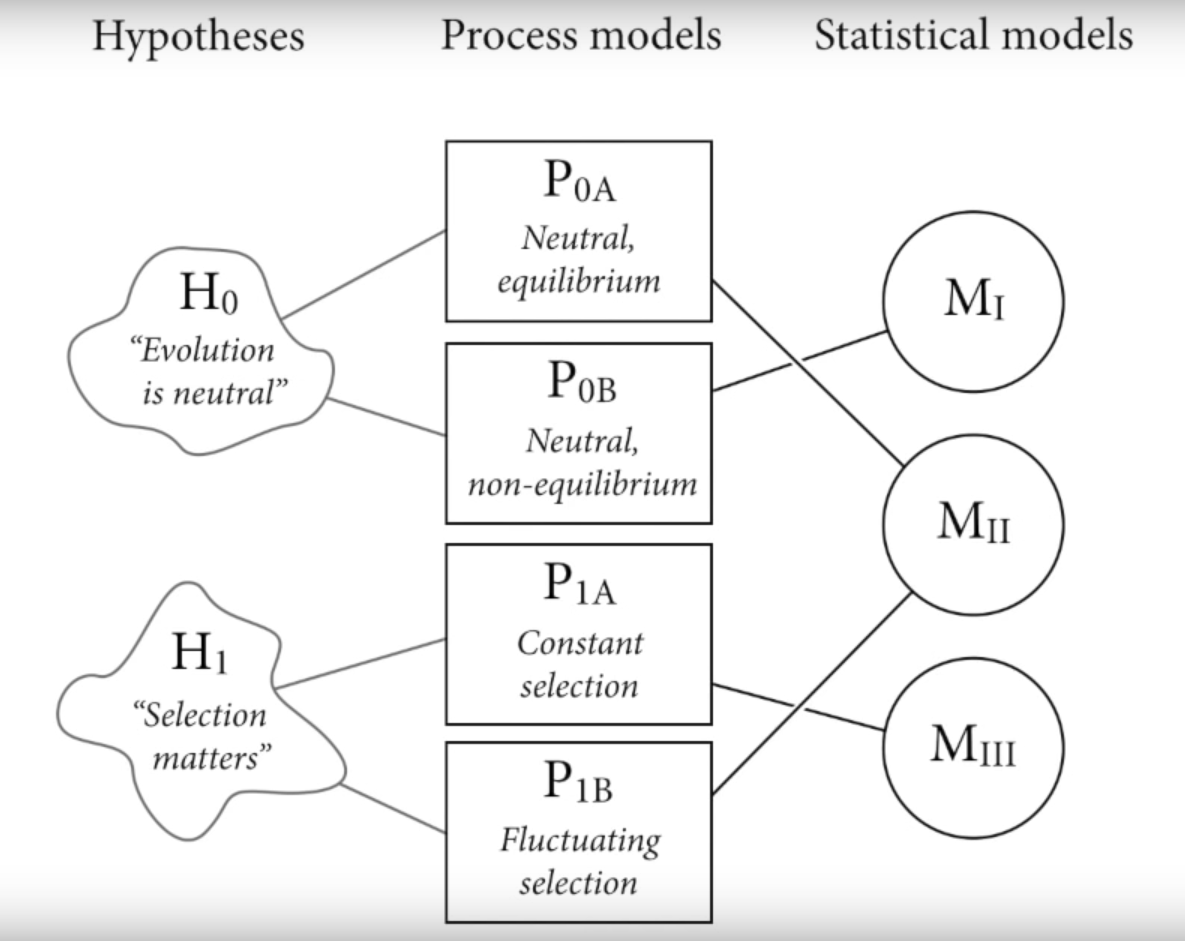30 Lecture 01 - 2022
30.2 Hypotheses - Process models - Statistical models
Hypotheses are vague. To work with them, we need to transform into process models
Process models are precise and causal. However, different process models can yield different or the same statistical model.
Statistical models strictly examine associations, not causation.

30.3 Null models
Unique, singular null models are not always feasible, eg. communities, networks and phylogenies.
30.4 Drawing the Bayesian owl
- Theoretical estimand (precisely defined in:)
- Scientific causal models
- Combine theoretical estimate and scientific causal models to build statistical models
- Simulate scientific causal models to validate statistical models yield theoretical estimand
- Analyse real data
30.5 Why Bayesian?
- flexible
- express uncertainty at all levels
- direct solutions to measurement error and missing data
- focus on scientific models instead of navigating flowcharts of different models and test - use the same approach for different problems
30.6 DAGs
Scientific insights = scientific causal models + statistical models
Causes are not found in the data, the data just has associations between variables
Even when the goal is descriptive, you need causal thinking to define how a sample differs from the population
Causal inference is the prediction of intervention * predict the consequences of an intervention * “What if I do this?”
Causal imputation is * being able to construct unobserved counterfactual outcomes * “What if I had done something else?”
DAGs are heuristic causal models and help with * deciding which variables to include * determining how to test a causal model * identifying bad controls